Weight-loss medication has evolved over the years from a taboo-like drug to appearing in mainstream media, such as behind home plate of MLB games. And while finding the right weight-loss solution can be a challenging experience, the evolution of this medicine has led to some tried-and-true results.
In addition to diet and exercise, two of the most effective weight-loss solutions today are the medications semaglutide and tirzepatide. Both originally prescribed to treat type 2 diabetes, their remarkable weight-loss properties have gone from a best-kept secret to a worldwide craze.
And, to help you choose which is best for your weight loss journey, we're about to compare tirzepatide vs. semaglutide, so you have all of the information you need.
Table of Contents:
- What Is Tirzepatide & How Does It Work?
- What Is Semaglutide & How Does It Work?
- Which Is Best For Weight Loss?
- Semaglutide vs Tirzepatide: Side Effects
- Tirzepatide and Semaglutide Administration
- Can You Take Tirzepatide and Semaglutide Together?
- Switching From Semaglutide To Tirzepatide
- Who Should Not Take Semaglutide
- Who Should Not Take Tirzepatide
- Comparing Weight Loss Medications Side-By-Side
- FAQs

What Is Tirzepatide?
Tirzepatide is a synthetic compound belonging to two classes of medications: glucagon-like peptide-1 (GLP-1) receptor agonists and dual glucose-dependent insulinotropic polypeptide (GIP) receptor agonists.
These agonist hormones are naturally-produced in the intestines in response to eating and then released into the gastrointestinal tract, working together to improve blood sugar levels and help induce weight loss. Commonly referred to as a dual GIP and GLP-1 agonist, tirzepatide synthetically replicates the body's natural processes.
Due to its positive effect on glucose levels, tirzepatide is prescribed as a subcutaneous injection to treat type 2 diabetes mellitus. Eli Lilly manufactures the only brand of tirzepatide available, known as Mounjaro.
Mounjaro received FDA approval in May 2022 to improve blood sugar control in adults with type 2 diabetes in addition to diet and exercise. Despite the approval, Mounjaro is commonly prescribed off-label to overweight and obese patients to promote significant weight loss.
How Does Tirzepatide Work?
Tirzepatide works as a dual GLP-1 receptor agonist (lower gut) and GIP receptor agonist (upper gut) to maximize benefits.
GLP-1 and GIP work similarly because they both begin by stimulating insulin release from the pancreas in response to eating. Insulin helps lower blood sugar levels by increasing glucose uptake into cells. Secondly, both GLP-1 and GIP reduce the release of the hormone glucagon. On the other hand, glucagon increases blood sugar levels by promoting the release of glucose from the liver.
These two hormones work together to reduce glucagon to help stabilize blood sugar levels. People with type 2 diabetes can't process insulin efficiently, so GLP-1 and GIP help the body store and use glucose properly. GIP has also been shown to affect our fat cells and where fat is deposited. Studies have shown that GLP-1 and GIP have a synergistic effect, working together to improve glucose regulation and induce fat loss on a scale greater than each compound individually1.
In addition, tirzepatide has a greater affinity to the GIP receptors than it does to GLP-1, leading to greater insulin release and a more significant drop in blood sugar levels2. The dual agonism of tirzepatide also helps reduce food intake and appetite greater than just GLP-1 by itself.
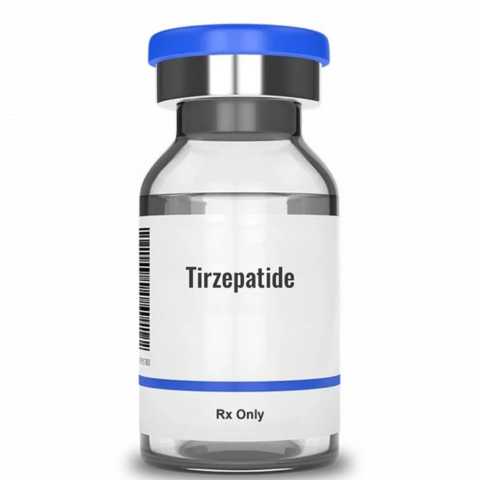
What Is Semaglutide?
While tirzepatide is both a GLP-1 and GIP receptor agonist, semaglutide is only a GLP-1 receptor agonist.
Like tirzepatide, the primary role of semaglutide is to mimic the GLP-1 hormone, which increases insulin production to lower blood sugar levels. In higher doses, semaglutide can trigger the brain to reduce appetite and increase satiety, helping you feel full longer. Due to these properties, semaglutide is used to help control glucose levels in patients with type 2 diabetes and to help lose weight.
Three semaglutide medication brands are FDA-approved: Ozempic, Rybelsus, and Wegovy. All three products are produced by Novo Nordisk, a Danish-based pharmaceutical company that specializes in diabetes medications.
Ozempic and Wegovy are similar in dosage and administration because they are both once-weekly subcutaneous injections. However, Weygovy is the only medication prescribed strictly for weight loss therapy, which is why it has slightly higher doses.
Wegovy is approved for weight loss in adults with a body mass index (BMI) of 30 or greater or a body mass index of 27 or greater with at least one weight-related medical condition, such as high blood pressure. We compare Ozempic and Wegovy in depth in our article: Ozempic vs Wegovy: Which Works Best For Weight Loss?
Rybelsus is unique in that it is the only oral GLP-1 receptor agonist available. Rybelsus is a daily tablet that, despite a more strict dosing protocol than injectable options, appeals to users who don't like needles.
Although Rybelsus and Ozempic are only approved for type 2 diabetes treatment, they are commonly prescribed off-label for weight loss. For additional information about these two medications, check out our article: Ozempic vs Rybelsus: Which Is Better?
How Does Semaglutide Work?
Semaglutide mimics the actions of GLP-1 glucagon-like peptide-1 (GLP-1), the hormone released in response to eating. The pancreas releases insulin, which helps regulate blood sugar levels and break down fats to use for energy. GLP-1 also reduces the release of glucagon, a hormone that helps prevent glucose from entering the bloodstream, causing blood sugar levels to rise.
In addition to glucose control, GLP-1 helps slow down the rate at which food enters the small intestine during digestion. It also slows down the rate at which we absorb nutrients, further helping to control blood sugar levels and improve satiety.
In higher doses, semaglutide triggers the brain to suppress appetite and increase satiety3. Semaglutide increases insulin levels, decreases glucagon, slows gastric emptying, and reduces appetite to stabilize blood sugar levels and induce weight loss, eliminating excess body weight.
Interested in how semaglutide works for weight loss? Check out our article: How Much Weight Can You Lose On Semaglutide?
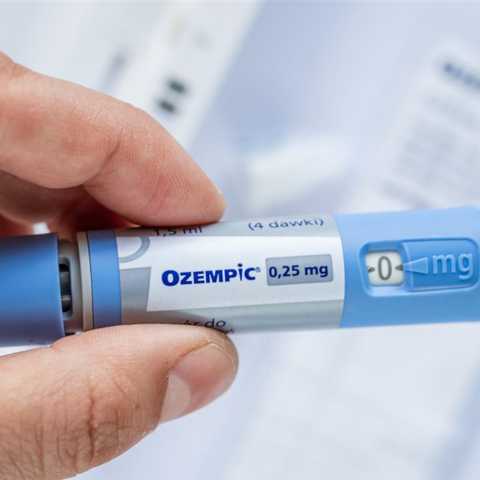
Tirzepatide vs Semaglutide For Weight Loss: Is One Better?
Based on the introduction to the medications, tirzepatide is more effective than semaglutide for weight loss. While semaglutide mimics the GLP-1 hormone to promote weight loss, tirzeptaide uses both GLP-1 and GIP to produce a significantly more powerful effect.
One study used the SURMOUNT-1 and STEP-1 clinical trials results to determine the cost-effectiveness of weight loss with semaglutide vs. tirzepatide. Tirzepatide resulted in a significant reduction, averaging 17.8% weight loss compared to 12.4% for semaglutide. Based on the average cost of each medication and the weight loss results, they determined the cost needed to lower body weight by 1%. The results showed an average of $985 for tirzepatide compared to $1,845 for semaglutide4.
Further analysis of the clinical trials STEP-2 and SURPASS-1 also conclude that tirzepatide results in more significant weight loss than semaglutide. In STEP-2, 69% of users on the highest dose of semaglutide injections (2.4 mg) obtained at least 5% in body weight reductions, while 26% had at least a 15% reduction. Similarly, the SURPASS-1 trials showed that 77% of users on the highest dose of Mounjaro (15 mg) lost at least 5% of body weight, while 27% lost at least 15%5.
Anecdotal evidence in a Reddit forum supports scientific reasoning and clinical trials. A thread asked for real-life testimonials, and one Redditor said: "For me (tirzepatide) personally way better, more effective and less side effects." (source)
It's important to note, though, that both are effective for weight loss. In addition, some people might find it reassuring that semaglutide has been around for longer. The good news is they are both effective, so speak with your doctor about which may be best for you.
If you are taking weight loss medicine but not losing weight, make sure to read our article 7 Reasons You're Not Losing Weight on Semaglutide for some helpful tips and solutions.
Semaglutide vs Tirzepatide: Side Effects
When it comes to side effects, both medications have minor gastrointestinal side effects, although there is a greater risk for more serious side effects, especially as you increase the dose. If you experience severe side effects, you should contact a healthcare professional.
Tirzepatide Common Side Effects:
- Nausea
- Diarrhea
- Decreased appetite
- Vomiting
- Constipation
- Indigestion
- Stomach pain
- Injection site reactions
More serious side effects, while rare, include inflammation of the pancreas, low blood sugar, allergic reactions, severe stomach problems, complications of diabetes-related eye disease, and kidney problems.
Semaglutide Common Side Effects:
- Injection site reactions
- Nausea
- Vomiting
- Abdominal pain
- Constipation
- Diarrhea
And, more rare side effects include bleeding, burning in the chest, pancreatitis, hypoglycemia, and a loss or change of taste.
Tirzepatide vs Semaglutide: Administration
Semaglutide is widely available in both subcutaneous and oral tablet forms, whereas tirzepatide is only available as an injection.
As a once-weekly injection, semaglutide has options in both Ozempic and Wegovy. The injection can be done any time, as long as it's the same day of the week. Both injectable semaglutide medications start at 0.25 mg for the first month to slowly introduce the compound and gauge side effects. Users can slowly increase the dose as needed, with a maximum dose of 2.4 and 2 mg. The most common injection sites are the upper arm, thigh, and stomach, which should be rotated each injection to avoid skin damage.
Rybelsus is the oral version of semaglutide, available as a daily tablet. Rybelsus has strict dosing protocols, requiring the dose to be taken first thing in the morning at the same time every day, 30-60 minutes before eating, with water. Users start Rybelsus at 3mg for the first month, then slowly increase to 7 or 14 mg daily. Semaglutide has been proven safe for 68 weeks or longer, so you can stay on the medication long-term as long as the side effects are manageable and a doctor approves.
Like semaglutide, tirzepatide is administered as a once-weekly subcutaneous injection that comes in pre-filled pens. The most common injection sites for tirzepatide include the thigh, upper arm, and abdomen.
Mounjaro comes in six different doses of color-coded, single-use, pre-filled pens, including 2.5 mg, 5 mg, 7.5 mg, 10 mg, 12.5 mg, and 15 mg. Beginners will start with the 2.5 mg dose for the first four weeks before increasing to 5 mg. Users typically stay at 5 mg for at least four weeks and increase as necessary until blood sugar levels are stable. To avoid dangerous side effects, do not exceed the maximum dose of 15 mg.
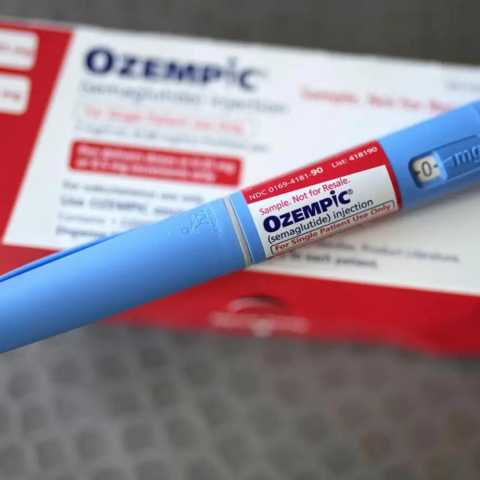
Can You Take Tirzepatide and Semaglutide Together?
There is limited research on this topic, so there isn't a clear-cut answer. While some believe it is safe to combine them since there are no drug interactions between the two, most experts do not recommend it.
Tirzepatide is also a GLP-1 receptor agonist, so it doesn't make sense to double down on the same type of medication. Many experts suggest that taking both medications increases the risk of side effects and the risk of severe and rare complications.
Anecdotal evidence also appears to be divided, with some users claiming the combination only enhances results while others warn of the potential dangers.
In a Reddit forum, one user posted: "It's the same class of medication and the same mechanism of action. Don't take them both. Choose one. Combining them will severely increase side effects." (source)
While there is no scientific evidence, we would caution anyone who wants to combine the two together. Be sure to speak with a healthcare professional before starting and closely monitor side effects.
Switching From Semaglutide To Tirzepatide
Semaglutide has been around slightly longer than tirzepatide, so it's no wonder there is more popularity surrounding it, despite tirzepatide being more effective for weight loss.
While results and side effects may vary by person depending on the individual reaction, research seems to indicate that many people would have better results using tirzepatide. Since tirzepatide combines GLP-1 and GIP, the effects are amplified compared to GLP-1 alone.
Luckily, transitioning from a semaglutide prescription to tirzepatide is relatively easy and painless. When making the transition, dropping back down to the starter dose of tirzepatide is unnecessary if you were not using the starter dose of semaglutide. However, if you are in the first month of semaglutide, you should start tirzepatide at the lowest dose.
It is important not to increase the dose when making the transition because there is a high risk of side effects. It should only be done under a healthcare provider's supervision to ensure no allergic reactions or other harmful side effects. We also recommend reading up on how long semaglutide stays in your system, so you've got all the information before starting the switch.
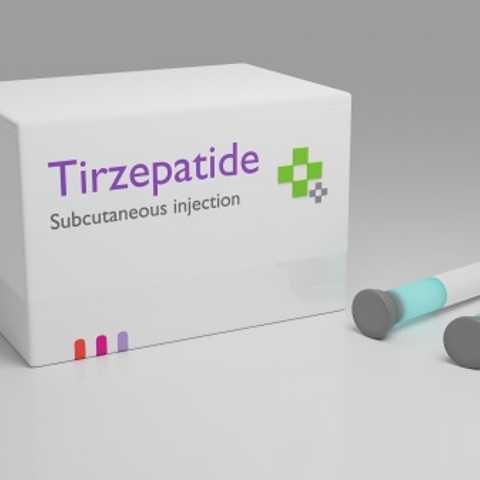
Who Should Not Take Semaglutide
Some people who should avoid taking semaglutide include those with the following:
- Thyroid issues or thyroid cancer
- Gastrointestinal disorders
- History of pancreatitis
- Kidney or liver issues
- Cardiovascular disease or issues
- Women who are pregnant, breastfeeding, or planning on becoming pregnant
Who Should Not Take Tirzepatide
Some people who should avoid taking tirzepatide include those with the following:
- Type 1 diabetes
- People with Diabetic Ketoacidosis (DKA)
- Gastrointestinal disorders or risk of gastrointestinal discomfort
- Severe kidney or liver disease
- History of pancreatitis or high risk for pancreatitis
- Children
- Women who are pregnant, breastfeeding, or planning on becoming pregnant
Semaglutide vs Tirzepatide: Comparing Side-By-Side
Interested in a side-by-side view of all of the information we just discussed? This table is for you!
|
Aspect |
Tirzepatide |
Semaglutide |
|
Class |
GLP-1/GIP dual receptor agonist |
GLP-1 receptor agonist |
|
Manufacturers |
Eli Lilly |
Novo Nordisk |
|
FDA Approval |
May 2022 |
Ozempic (2017) |
|
Frequency |
Once-weekly injection |
Weekly or daily |
|
Amounts |
2.5 mg to 15 mg |
0.25 mg to 2.4 mg (injections) |
|
Side Effects |
Nausea |
Nausea |
|
Effectiveness |
~17.8% weight loss |
69% had ≥5% weight loss |
|
Availability |
Injectable only |
Injectable |
|
Cost (US Average) |
$1,023 (Mounjaro) |
$936 (Ozempic) |
|
Cost Comparison |
~$985 (Mounjaro) |
~$1,845 (Ozempic) |
FAQs
Below are some of the most common questions related to mounjaro vs. semaglutide.
What is the difference between mounjaro and semaglutide?
The difference between tirzepatide and semaglutide is that semaglutide is only a GLP-1 receptor agonist, while mounjaro targets both GLP-1 and GIP.
Can you take Mounjaro and Rybelsus together?
Although there is limited research, most doctors agree that despite the lack of drug interaction, you should not take mounjaro and rybelsus together.
Are Wegovy and Mounjaro the same?
No, Wegovy is a type of injectable semaglutide, whereas Mounjaro is a brand name for tirzepatide.
How much weight can you lose on tirzepatide?
Studies have shown that users can lose significant amounts of weight on tirzepatide. In the SURPASS-1 clinical trials, 77% of users had at least a 5% body weight reduction, while over 27% lost at least 15%5.
How much does tirzepatide cost compared to semaglutide?
In the United States, the average price of Ozempic (semaglutide) is $936 compared to $1,023 for Mounjaro (tirzepatide). However, if you compare the price based on the cost to lower body weight by 1%, tirzepatide is the better value at roughly $985 compared to $1,845 for semaglutide4. For more pricing information, read our article: How Much Is Semaglutide Without Insurance?
Will my doctor prescribe tirzepatide for weight loss?
Tirzepatide is technically only approved to help regulate blood sugar levels and reduce weight in people with type 2 diabetes. However, your doctor might prescribe it off-label for weight loss.
Can you drink alcohol with tirzepatide?
No, you can not drink alcohol with tirzepatide because it can cause dangerously low blood sugar levels.
Semaglutide Or Tirzepatide: Which Should You Choose?
While other supplement development has remained stagnant in recent years, the development of powerful fat-burning supplements has exploded.
Two of the most popular weight-loss medications to take the market by storm are semaglutide and tirzepatide. Both are prescribed to treat type 2 diabetes, but they are also extremely effective for losing weight. The primary difference between semaglutide and tirzepatide is that tirzepatide targets two hormones (GLP-1 and GIP), whereas semaglutide only targets GLP-1.
These hormones improve glycemic control and burn fat by increasing insulin production, reducing glucagon production, slowing gastric emptying, and reducing appetite. Tirzepatide has been proven more effective because GLP-1 and GIP synergize when combined, resulting in more significant weight loss and better glucose stabilization. Having said that, semaglutide has been around longer, and that can be reassuring.
Regardless of which product you choose, it is essential to follow a healthy diet and maintain a consistent exercise routine to significantly reduce body weight.
Interested in reading about how semaglutide stacks up against other weight loss medications? Check out our article on Liraglutide vs Semaglutide and our piece comparing Semaglutide vs Phentermine.
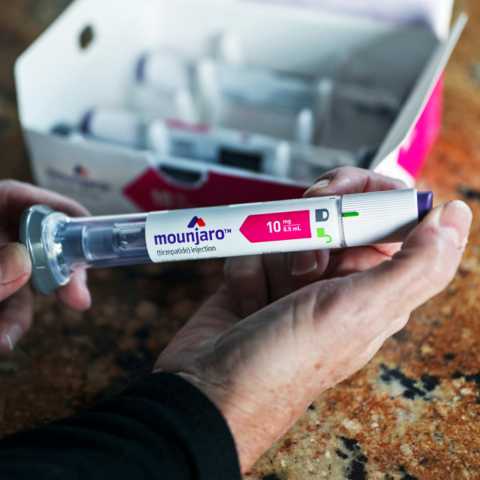
References
- Rizvi, Ali A, and Manfredi Rizzo. "The Emerging Role of Dual GLP-1 and GIP Receptor Agonists in Glycemic Management and Cardiovascular Risk Reduction." Diabetes, Metabolic Syndrome and Obesity: Targets and Therapy, vol. 15, 5 Apr. 2022, https://ift.tt/BkUz3Ji, https://ift.tt/oQ7YARH.
- Thomas, Melissa K, et al. "Dual GIP and GLP-1 Receptor Agonist Tirzepatide Improves Beta-Cell Function and Insulin Sensitivity in Type 2 Diabetes." The Journal of Clinical Endocrinology & Metabolism, 24 Nov. 2020, https://ift.tt/kXfOJWl.
- Chao, Ariana M, et al. "Clinical Insight on Semaglutide for Chronic Weight Management in Adults: Patient Selection and Special Considerations." Drug Design, Development and Therapy, vol. Volume 16, Dec. 2022, https://ift.tt/5y0hmfn.
- Azuri, Joseph, et al. "Tirzepatide versus Semaglutide for Weight Loss in Patients with Type 2 Diabetes Mellitus: A Value for Money Analysis." Diabetes, Obesity and Metabolism, 27 Dec. 2022, https://ift.tt/WBoUh4w.
- Jung, Han Na, and Chang Hee Jung. "The Upcoming Weekly Tides (Semaglutide vs. Tirzepatide) against Obesity: STEP or SURPASS?" Journal of Obesity & Metabolic Syndrome, vol. 31, no. 1, 30 Mar. 2022, https://ift.tt/xwoqdO2.

0 Comments